In This Issue
- Verizon Cloud Backup
- Edge Computing Next
- NetApp’s SEM Sales
- Report from the CEO
- FCC Defends Privacy
- DARPA Crime Platform
- Privacy Is EU Trend
- Congress Is Warned
- Feds Lean-In on Cloud
- Cybersecurity Spend
- Cloud Propels Security
- DDoS Attacks Grow
- IoT Security Grappling
- Why Orgs Go Wrong
- Insights into Trails
- Keep Your Data Safe
- Coming DCIA Events
Verizon Launches New Cloud Backup Service
Excerpted from Verizon-Actifio Press Announcement
 Verizon Enterprise Solutions has joined forces with Actifio to launch a new cloud backup service using the copy data virtualization leader’s technology platform.
Verizon Enterprise Solutions has joined forces with Actifio to launch a new cloud backup service using the copy data virtualization leader’s technology platform.
The service will support customers using virtualized infrastructures — including a combination of colocation, hosting, off-premises servers, and other public clouds — to enable a unified hybrid cloud environment where data is easy to manage, access, and protect.
The new Premise to Cloud Backup offering builds on Actifio’s growing relationship with Verizon, and demonstrates the business impact of their joint capability around three key use cases: enabling hybrid cloud, building higher quality applications faster, and improving resiliency and availability.
“The complexity of legacy infrastructure limits the ability of many enterprises to innovate around their data,” said Dan Jablonski, Director of Cloud and IT solutions, Verizon Enterprise Solutions.
“We chose Actifio’s class-leading copy data virtualization technology to power this new offering because it means we can now offer customers a simple, single solution to protect, move and store data in our cloud… Read More
Edge Computing: Next Frontier for Telcos
Excerpted from Light Reading Report by Mark Hurley
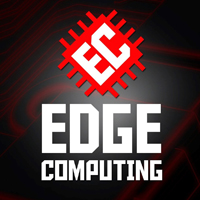 Edge computing presents opportunities for telcos to re-evaluate their business models to diversify their sources of revenue beyond the traditional.
Edge computing presents opportunities for telcos to re-evaluate their business models to diversify their sources of revenue beyond the traditional.
Driven by the Internet of Things (IoT), video-on-demand (VoD), and Big Data, edge computing moves data centers closer to the end user at the edge of the network, optimizing content delivery and data processing.
By converting empty floor space into an edge computing data center, telcos can not only expand their business, but provide better service by reducing latency and lowering transmission costs.
Why telcos? In today’s diversified data center landscape, the lines are blurring between telcos, network carriers, traditional colocation providers, and cloud data center service providers.
Telcos are uniquely positioned to benefit from the edge computing trend due to their location at the literal edge of the network where they are closest to the user base.
Additionally, because of the inherent nature of their business, telcos likely already have the critical infrastructure (including high-bandwidth fiber) necessary to support this new data center model… Read More
What’s Ahead for NetApp’s SEM Sales
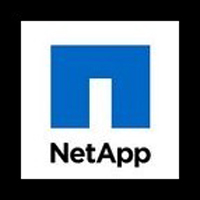 NetApp has witnessed meaningful growth in its software entitlements and maintenance (SEM) revenue in the last few years, even as its core storage product revenues have suffered in the same period.
NetApp has witnessed meaningful growth in its software entitlements and maintenance (SEM) revenue in the last few years, even as its core storage product revenues have suffered in the same period.
Software entitlements and maintenance includes product upgrades, bug fixes and patch releases for existing products on an ad hoc basis.
The growth in NetApp’s product sales over the past few years is also reflected in the SEM division, as shown in the table here.
A key point to note is that since it is a purely software division, its gross margin (over 95%) is significantly higher than the company-wide gross margin (60-65%).
On the other hand, NetApp’s unbundled storage software sales have gone down since 2011, owing to an increase in converged systems sales and an increasing proportion of in-built software associated with storage products.
As a result, the revenue generated via independent storage software sales has fallen drastically in the last few years as shown here. This trend could continue over the next few years, as customers are likely to continue to purchase converged systems… Read More
Report from DCIA CEO Marty Lafferty
 We’re now just a few weeks away from DataCloud Europe, taking place on June 8th and 9th at the Grimaldi Forum in Monte Carlo.
We’re now just a few weeks away from DataCloud Europe, taking place on June 8th and 9th at the Grimaldi Forum in Monte Carlo.
Following 2015’s highly successful co-sponsored events, The DCIA is pleased to partner with BroadGroup in presenting this marquee event.
BroadGroup is an international consulting firm that tracks cloud computing, data center, and information technology (IT) markets and investments.
Based in London, England, the company provides business intelligence, publishes research, and produces global events that inspire information communities.
The community of interest being fostered by BroadGroup and the DCIA is diverse but united — in its focus on innovation of cloud computing and data center operations.
Our 2016 events reflect that perspective.
Outstanding business and networking opportunities, coupled with powerful new ideas, make them inspiring occasions where deals are done in the cloud economy.
DataCloud Europe is the successor event to DataCenters Europe and the Enterprise Cloud Forum.
DataCenters Europe was first held in London in 2005, and rapidly became recognized as the premier European networking conference.
The combined event now makes its home in Monaco, the new Mediterranean locale for anyone engaged in cloud services, data centers, or IT.
The 2016 conference will focus on cloud computing advances and changes in data management, with a stellar line-up of speakers including global infrastructure leaders and subject matter experts.
DataCloud Europe 2016 will attract more CEOs and dealmakers engaged in IT transactions than any other event in Europe.
The audience profile includes senior management of data centers, cloud services and hosting providers; system integrators; managed services companies; cloud brokers; broadband network operators; and critical infrastructure equipment vendors.
As an added attraction, on Wednesday June 8th, the eve of the conference, the DataCloud 2016 Awards Ceremony & Gala will take place.
This is truly an industry event that is not to be missed.
Please contact me if you’d like to attend on a complimentary basis as a guest of the DCIA. Share wisely, and take care.
FCC Chair Defends Privacy Proposal
Excerpted from The Hill Report by David McCabe
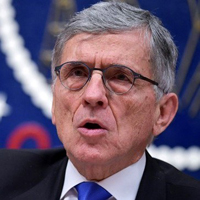 Federal Communications Commission (FCC) Chairman Tom Wheeler defended his proposal to enforce new privacy rules for broadband providers on Wednesday while sparring with opponents at a Senate Judiciary Committee hearing.
Federal Communications Commission (FCC) Chairman Tom Wheeler defended his proposal to enforce new privacy rules for broadband providers on Wednesday while sparring with opponents at a Senate Judiciary Committee hearing.
The proposal — which the Commission voted to formally consider in March — would require Internet providers to get their customer’s affirmative consent for most uses of their information.
That’s led opponents to claim that Wheeler is unfairly targeting Internet providers for tougher regulations, instead of applying the same standards that regulate companies like Google and Facebook.
“First, it makes little sense to give some companies greater leeway under the law than others when all may have access to the very same personal data,” said Republican Commissioner Ajit Pai at the hearing, held by the Subcommittee on Privacy, Technology and the Law.
“This disparate approach does not benefit or the public interest. It simply favors one set of corporate interests over another.”
Wheeler told the committee that Internet providers were in a privileged position when it came to accessing consumer information… Read More
DARPA Platform to Pin and Predict Crime
Excerpted from The Register Report by Darren Pauli
 The US Military skunkworks Defense Advanced Research Projects Agency (DARPA) is hoping to build a platform to help bolster the treacherous world of attack attribution that would generate, anonymize, and share threat data.
The US Military skunkworks Defense Advanced Research Projects Agency (DARPA) is hoping to build a platform to help bolster the treacherous world of attack attribution that would generate, anonymize, and share threat data.
The agency is seeking proposals for an “Enhanced Attribution” program which would bring high quality “transparency” to the “opaque” world of actor attribution, hopefully revealing the activities of online actors without compromising sources and methods.
Project lead Angelos Keromytis says there is presently little chance that a criminal will be caught.
“Malicious actors in cyberspace currently operate with little fear of being caught due to the fact that it is extremely difficult, in some cases perhaps even impossible, to reliably and confidently attribute actions in cyberspace to individual,” Keromytis says.
“The reason cyber-attribution is difficult stems at least in part from a lack of end-to-end accountability in the current Internet infrastructure.”
Cyber-campaigns spanning jurisdictions, networks, and devices are only partially observable from the point of view of a defender… Read More
Privacy Is European Trend to Worry About
Excerpted from American Banker Report by Penny Crosman
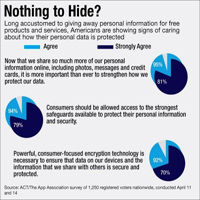 Forget Brexit and all the rest. The European threat that US bankers should start taking more seriously is the potential spread of tough new privacy standards across the Atlantic.
Forget Brexit and all the rest. The European threat that US bankers should start taking more seriously is the potential spread of tough new privacy standards across the Atlantic.
Some say the United States won’t be far behind Europe in implementing harder privacy and security laws.
Presently there is no cross-industry privacy law in this country — rules tend to come from industry regulators and state attorneys general.
“There’s a growing demand from customers, who are largely global citizens now no matter where they live, that they should have knowledge and possibly some participation in the use of their personal data,” said Stuart Lacey, CEO of Trunomi, maker of software that helps companies obtain consumer consent.
“I don’t see the US being that far behind in having that level of surety.”
Privacy has been an issue that has plagued financial services for at least two decades, but many observers believe it is about to come to a head because banks have more data about their customers than anyone else, do the least with it, yet will have to rely on it as they overhaul their business models to stay competitive with fintech and other rivals… Read More
Congress Warned about Cybersecurity after Attack
Excerpted from TechCrunch Report by Kate Conger
 Congressional gridlock can usually be blamed on stubborn representatives and senators.
Congressional gridlock can usually be blamed on stubborn representatives and senators.
But a new string of ransomware attacks on the House of Representatives could stall legislation more effectively than party infighting or a filibuster.
In an email provided to TechCrunch, the House technology service desk warned representatives of increased ransomware attacks on the House network.
The email warns that attackers are focusing their efforts on third-party email apps, like YahooMail and Gmail, and tells representatives that access to YahooMail will be blocked on House networks.
“When a user clicks on the link in the attack e-mail, the malware encrypts all files on that computer, including shared files, making them unusable until a ‘ransom’ is paid.
The recent attacks have focused on using .js files attached as zip files to e-mail that appear to come from known senders,” the email notes.
Ransomware is typically delivered via email and encrypts a victim’s data and demands payment in exchange for the decryption key… Read More
Feds Lean-In on Cloud & Cybersecurity
Excerpted from The Hill Report by Pat Gelsinger
 Remember when “government” and “innovation” were once considered mutually exclusive concepts, never uttered in the same breath?
Remember when “government” and “innovation” were once considered mutually exclusive concepts, never uttered in the same breath?
The state of play for federal IT in 2016 paints a much more promising picture.
Truly, we have never witnessed a more disruptive period in the history of the information technology industry, with the agencies across the federal spectrum adapting and adopting new technologies with the speed and flexibility usually attributed to the private sector.
And yet, we could have just as easily been mired in a relative “dark age” of information sharing in government, were it not for the even-keeled prudence and vision of agency heads.
The last five years were marked by serious reminders that security threats are ever-present and ever-evolving.
Candidly, I believe the national security document disclosure was the most significant technological incident of the decade and will have extensive, lasting impacts for many more decades.
On a more personal level: along with millions of Americans, I was caught up in the upheaval and dismay caused by the OPM data breach… Read More
Cybersecurity Guides Federal Software Spend
Excerpted from TechNewsWorld Report by John Higgins
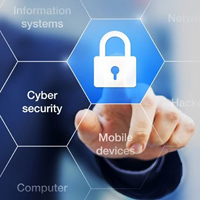 The US government is on track to significantly boost spending on cybersecurity solutions.
The US government is on track to significantly boost spending on cybersecurity solutions.
However, evolving requirements to greatly improve federal protection of information technology resources will shape that spending.
In fact, federal cyber-protection goals should be augmented and significantly modified, according to recent studies of the federal market.
The linkage between increased federal investing in cybersecurity and the requirements for bolstering IT protection are portrayed in two newly released reports.
Increased federal investments in cyber-protection virtually are inevitable and will occur regardless of any politically partisan differences over the federal budget, one report concluded.
“Owing to instances of criminal activities since September 2001, the US federal government is enforcing the use of cybersecurity products to monitor data traversing through the network and control its access by preventing unauthorized individuals from gaining access,” said a report issued by Technavio last month… Read More
7 Ways Cloud Computing Propels IT Security
Excerpted from InformationWeek Report by Andrew Froehlich
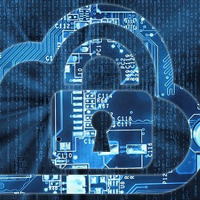 A spate of high-profile public and private cloud security breaches is helping to push advancements in security such as encryption. Here’s a look at 7 ways the cloud may be the largest driver of IT security today.
A spate of high-profile public and private cloud security breaches is helping to push advancements in security such as encryption. Here’s a look at 7 ways the cloud may be the largest driver of IT security today.
To some, cloud computing and IT security do not intersect. The results are often disastrous.
Considering the huge amount of press that cloud computing receives when breaches occur, it’s easy to understand why they believe that.
But if you look at IT security from a wider lens, you’ll see that cloud computing technologies are actually helping to propel IT security at rates never seen before.
Indeed, some of the advancement of security mechanisms and architectures such as end-to-end encryption can be traced back to public and private cloud security breaches where sensitive data was stolen for profit or fun.
This brought the topic of encryption to the forefront of conversation in CIO circles around the globe. It also likely contributed to the recent skyrocketing adoption rates for encryption.
According to a recent Ponemon Institute study that polled more than 5,000 IT and business managers from various parts of the world… Read More
DDos Attacks Increase, But Victims Get Smarter
Excerpted from The VAR Guy Report by Michael Cusanelli
 DDoS attacks are increasing, but so are corporations’ efforts to combat them, according to a new study.
DDoS attacks are increasing, but so are corporations’ efforts to combat them, according to a new study.
Hackers may be getting smarter, but so are their would-be victims, according to a new study from Neustar, a cloud-based information services provider.
Despite the rate and range of Distributed Denial of Service (DDoS) attacks rising rapidly in 2015, so too are corporations’ efforts to protect against them, the company found in its third global DDoS Attacks and Protection Report.
Of the 1,000 IT professionals surveyed, 73 percent said of organizations said they were struck with a DDoS attack in the past year.
However, 76 percent of companies have also invested in more protection against such attacks, and 47 percent actively share information with others in security consortia.
That’s not to say that attackers aren’t making their mark, however; 50 percent of organizations said an attack would cost them $100,000 per hour in a peak-time outage, while 33 percent estimated an attack would cost them upwards of $250,000 per hour. And the chance of being attacked multiple times increases after the first successful attempt… Read More
Grappling With IoT Security
Excerpted from Semiconductor Engineering Report by Ed Sperling & Ernest Worthman
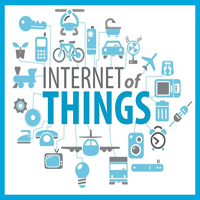 As the Internet of Things (IoT) begins to take shape, the security implications of connecting devices and systems to the Internet and what needs to be done to secure them are coming into focus, as well.
As the Internet of Things (IoT) begins to take shape, the security implications of connecting devices and systems to the Internet and what needs to be done to secure them are coming into focus, as well.
There is growing consensus across the semiconductor industry that many potential security holes remain, with new ones surfacing all the time. But there also is widespread recognition that these problems need to be solved at every level, beginning at the architectural stage.
By all accounts this is a multi-dimensional problem, involving the entire software stack as well as how data moves through hardware and from one system to another. Yet it’s also an evolving problem with many unanswered questions. It isn’t clear yet is how all of the pieces will fit together, what can be carried forward from previous designs, and how that will change as devices are assembled quickly for new market segments that didn’t exist in the past.
“IoT issues are becoming clearer year by year,” said Frankwell Lin, CEO of Andes Technology. “In particular, you have to be able to prevent hacking. People are noticing that now.”
For one thing, data breaches are becoming more sophisticated. The recent breach of the SWIFT System, which is used by 3,000 banks… Read More
Why Organizations Get Cybersecurity so Wrong
Excerpted from Information Age Report by Ben Rossi
 Contrary to popular belief, insider attacks are not just caused by employees.
Contrary to popular belief, insider attacks are not just caused by employees.
An “insider” is anybody given access to either data or infrastructure within an organization.
This could be a disgruntled current or former employee, or a contractor, third party or partner organization.
For many large organizations, there is a long line of people who have the access to commit an insider attack.
Once they’ve got access to parts of the internal infrastructure, the in-place perimeter security is effectively useless.
Internal segmentation of networks is typically poorly deployed across organizations as it’s classed as a lower priority.
‘Many firms have historically focused on perimeter security, meaning their network has a hard exterior but soft underbelly,’ says Steve Mulhearn, head of enhanced technologies for the UK and Ireland at Fortinet.
A major driver for insider threats is linked to the motive and intent of an employee to perform a malicious activity, for either financial gain or personal satisfaction.
Intent and capability from misaligned user access is a toxic combination, with employees often holding the organization responsible… Read More
Insights into Trails We Leave in the Digital World
Excerpted from The Irish Times Report by Frank Dillon
 Everything we do in the digital world leaves a trail, information that corporations find invaluable in determining our habits.
Everything we do in the digital world leaves a trail, information that corporations find invaluable in determining our habits.
Assessing information quickly or increasingly, in real time, can have profound effects on the success of a business as it aligns its products or service offerings to meet the requirements and preferences of consumers.
Data is growing at an exponential rate.
According to the author of this insightful book, by 2020 it is predicted that about 1.7 megabytes of new information will be created every second, for every human being on the planet.
This includes not only data from the tens of millions of messages we send via email, text and social media but also from the one trillion digital photos we take each year.
On top of that, consider the amount of data we have from all of the sensors that surround us. Many smartphones now have sensors to tell us where we are (GPS) how fast we are moving (accelerometers) what the weather is like (barometers) and even what force we are using to press the touch screen (touch sensors).
Turning this information into insight is big business and Marr explores how advances in technology have facilitated this… Read More
5 Ways to Keep Your Data Safe from Hackers
Excerpted from Report by Leigh Buchanan
 One advantage of being small: you’re beneath the hackers’ notice. That’s how it used to be, anyway.
One advantage of being small: you’re beneath the hackers’ notice. That’s how it used to be, anyway.
But as large companies shore up their security systems in response to high-profile data breaches, that means “the bad guys are moving down the food chain, where folks are not as prepared,” says Brian Casazza, CIO at Vistage, a training organization for small- and mid-sized businesses.
“It’s not okay to think just because I’m a small business owner, I’m not an interesting target. Because now they [are] attacking the smaller organizations, aggregating their information, and then profiting from that.”
As part of a survey of its membership released to coincide with Small Business Week, Vistage reports that more than 40% of small business owners say they are unprepared for a cyber-attack.
Just 29% report having a CIO to handle such high-stakes issues; others contract out the job to consultants or delegate it to non-specialist employees, such as office managers.
“So not many small and medium-sized businesses have the types of resources or specific skill sets to be able to address this properly,” Casazza says… Read More
Coming Events of Interest
DataCloud Europe 2016 — June 8th-9th in Monte Carlo, Monaco. The 2016 conference will focus on cloud computing advances and changes in data management, with a stellar line-up of speakers including global infrastructure leaders and subject matter experts.
Cloud and DevOps World Forum 2016 — June 21st-22nd in London, England. Now in its eighth year, C&DWF is firmly established as the leading content-led exhibition for the European Cloud and DevOps community and the premiere meeting place for CIOs.
2016 Creative Storage Conference — June 23rd in Culver Cirty, CA. The tenth annual CS will bring together digital storage providers, equipment manufacturers, software distributors, and professional media and entertainment end-users to explore the conference theme “The Art of Storage.”
Security of Things World — June 27th-28th in Berlin, Germany. Topics include securing cyber physical systems for IoT, expanding IT security with intelligence-led ops, business continuity management considerations, data privacy in an interconnected world, and security strategies.
Mobile World Congress Shanghai — June 29th – July 1st in Shanghai, China. MWC Shanghai is a very unique gathering that brings together industry participants ranging from C-Level mobile executives to end-user consumers passionate about mobile.
Industry of Things World Europe — September 19th-20th in Berlin, Germany. IoT business models, new IoT markets and strategies, product lifecycle management, next generation data handling and value assessment, IoT organizational impacts, and IoT security issues.
Government Video Expo — December 6th-8th in Washington, DC. GVE is the East Coast’s largest technology event for broadcast and video professionals, featuring a full exhibit floor, numerous training options, free seminars, keynotes, panel discussions, networking opportunities, and more.
